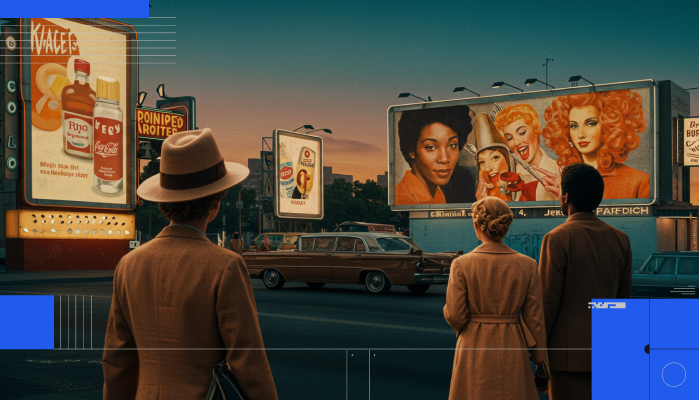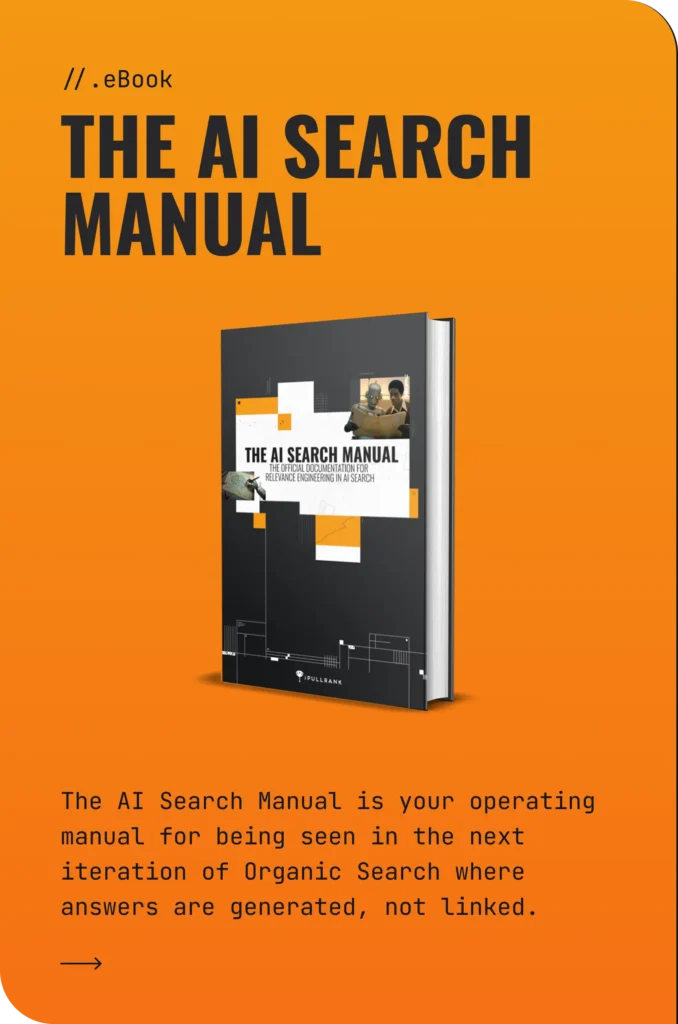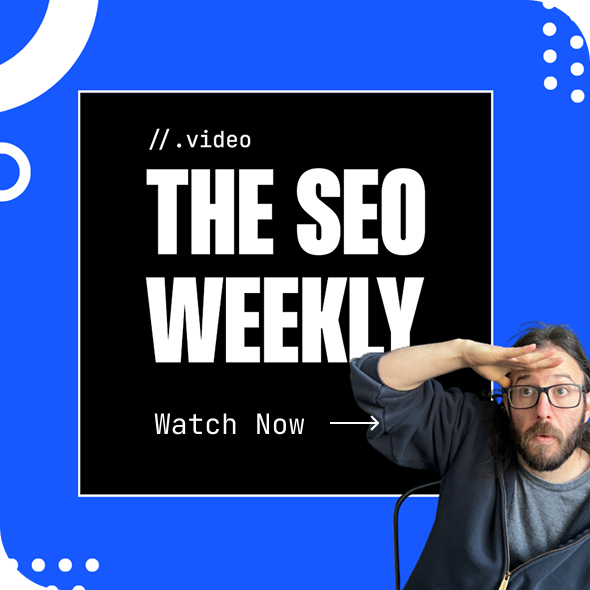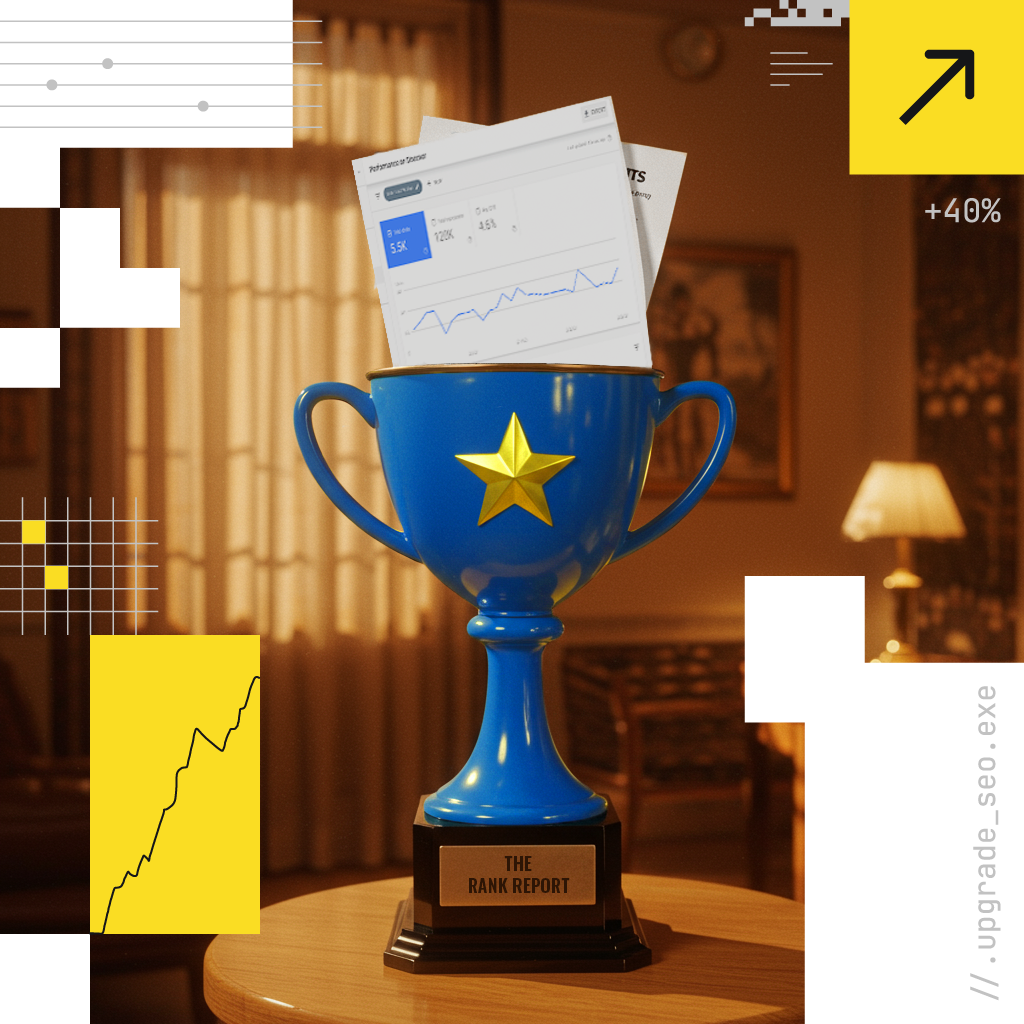Your brand’s loudest voice has always been the search results page. It’s been shaping your brand’s narrative since day one, and now there’s even more emphasis on brand with the evolution of generative AI search and systems like AI Mode.
It’s never been more important to optimize what people see of your brand. If you Google your business right now, do you like what you see?
These days, there’s also a more educated searcher. While they used to perform a query and read some posts or watch some videos to answer their questions or find what they’re looking for, now they’re coming into the search with some familiarity with certain big-name brands.
AI Overviews and AI Mode are intended to save the cognitive load of the searcher. What are the consequences of that? It often leads to new, different AI searches and follow-up questions that build on the original query, but people are still not clicking around to different pages as frequently. We’re in an era of zero-click searches.
SparkToro released a report stating that 44.19% of searches are branded vs. more generic searches.

What does this mean?
In a word: branding.
As Mike King often says, “Search has always been a brand channel.” Strong branding has always been vital for getting your business out there for the world to find, but now it’s even more important as searchers are clicking less on links and focusing more on what’s familiar to them.
- Amazon and Walmart dominate retail
- Apple and Microsoft top any tech searches
- Forbes and the Wall Street Journal are still very well known in publishing
How can smaller brands possibly compete? Now is the time to build your brand for LLMs.
The Importance of Building Your Brand
Branding is about identity, trust, and influencing how people feel about your business. AJ Kohn wrote “It’s Goog Enough!” two years ago about the growing mediocrity of Google search and how a company like Forbes can rank high for every category under the sun despite not being an “expert.” Kohn acknowledges that Google is often accused of being biased toward brands, but only because searchers are biased toward brands.
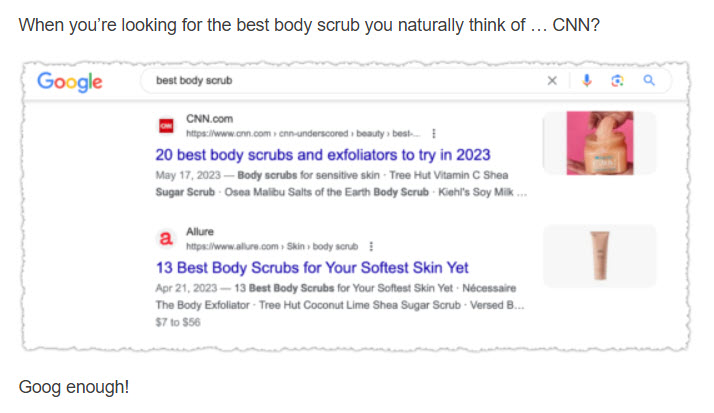
“Every Google search is essentially an aided awareness test of sorts,” Kohn wrote.
The way it used to work was that the more recognizable your brand, the more clicks you’d earn, which pushed your content even higher in rankings. This reinforces the idea that search is a powerful brand channel.
Consider the results when you search for sneaker brands:
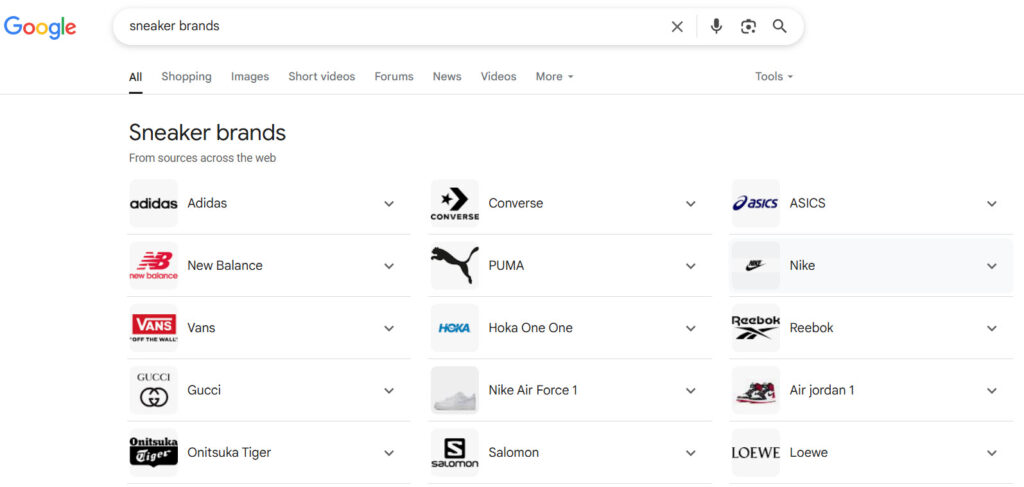
You’ve probably heard of most of them already, but do you know all of them?
- Adidas
- Converse
- ASICS
- New Balance
- Onitsuka Tiger
One of those brands is not like the others. Which one are you least likely to buy?
These days, with AI Overviews stealing clicks from publishers, you need to focus on making your business name visible in LLMs, and your brand prominent enough to encourage direct traffic to your website. The more visible your brand is across the web, the more it becomes part of the AI’s language model training data and retrieval pipelines. And then when searchers see a list of business names, they’re more likely to go with the brand they recognize right away.
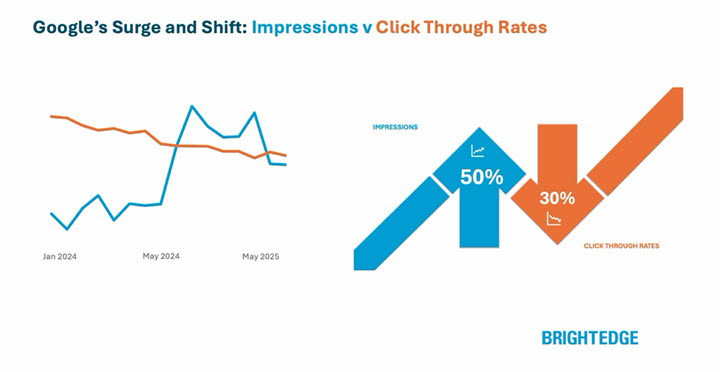
Overcoming the Limitations of Traditional Rank Tracking
Google CEO Sundar Pichai has said that AI Overviews encourage more searching because users don’t need to click elsewhere, but may have follow-up questions, so they will continue querying. AI Mode encourages similar conversational search behavior.
Pichai even announced at Google I/O this year that AI Overviews are driving a 10% increase in search queries. However, we’ve seen reports that show a decrease in clicks when AI Overviews are present.
MailOnline found that AI Overviews had a negative impact on their CTR:
- Desktop CTR falls from about 13% to less than 5% when an AI Overview appears.
- Mobile CTR drops from about 20% to 7% due to AI Overviews.
I don’t doubt that features like AI Overviews and AI Mode both encourage more searching. The essence of semantic search requires follow-up and conversational-style questioning. But if you’re just stuck in a search loop and querying over and over in AI Mode and AI Overviews, you probably won’t ever click away to an actual website. Therein lies the problem for publishers.
In this example of searching for treatment for the common cold, AI Overviews show up at the top of the page before the Mayo Clinic and even the CDC site. However, the AI Overviews use the information from those sites in their answer, eliminating the need to click on the sites:

Regardless of how much (or how little) you trust AI Overviews, you might feel better knowing that they cited reputable brands like the Mayo Clinic and the CDC. Then you will see if all the information you need is there or if you need to refine your search (maybe you prefer more natural and holistic recommendations) and ask more questions. You may not click on the CDC website at all during this process.
Traditional SEO practices typically relied on keyword rank tracking to gauge online visibility. However, LLMs interpret user intent and understand semantic relationships, making simple rank tracking less effective.
Modern search engines personalize results based on user history and context in a number of ways, making universal rankings less meaningful:
- Search history
- Browsing history
- Click behavior
- Location data
- Device type
- Language and region settings
- Search session context
- Logged-in account data
Zero-click search results in LLMs also reduce the importance of traditional rankings. However, LLMs can be queried to reveal how they associate various concepts with a brand, providing insights into brand perception, related entities, and sentiment.
There are endless types of search intents, but you probably know the four main ones:
- Commercial intent: where a user intends to buy a product or service but needs more information, like searching for the best hiking boots and comparing brands.
- Transactional intent: when the user is ready to buy, like selecting the specific boot they want.
- Informational intent: when a user wants to gain further knowledge, like researching what qualities make a good hiking boot.
- Navigational intent: in which a user searches for a specific brand’s page, like looking for the Instagram account of a hiking boot brand to see the boots in use.
These search intents are expanded in Google’s “query fan-out,” which is key to how AI Mode finds content. Instead of running one search, it generates a set of related subqueries, with some directly based on the original and others inferred from context. These varied queries pull a broad range of documents, helping capture user intent that wasn’t clearly stated:
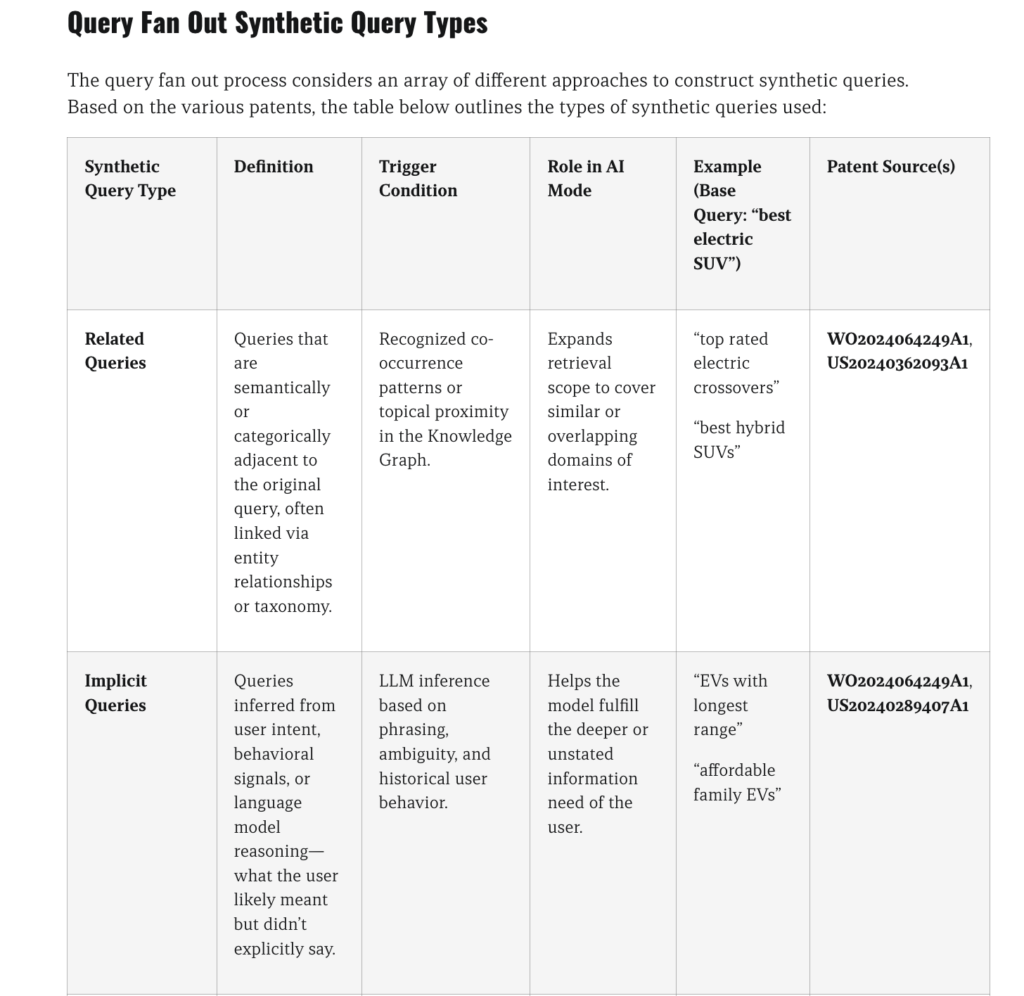
Dan Petrovic’s DEJAN Methodology tackles this by systematically probing LLMs to map out a brand’s association network. By analyzing the associations over time, businesses can track changes in brand perception and identify emerging trends. It leverages the power of LLMs to analyze brand perception and positioning in a way that surpasses the limitations of traditional rank tracking.
In his SEO Week presentation, JR Oakes discussed the association of brand names with specific industry phrases and attributes, highlighting the importance of establishing your brand:
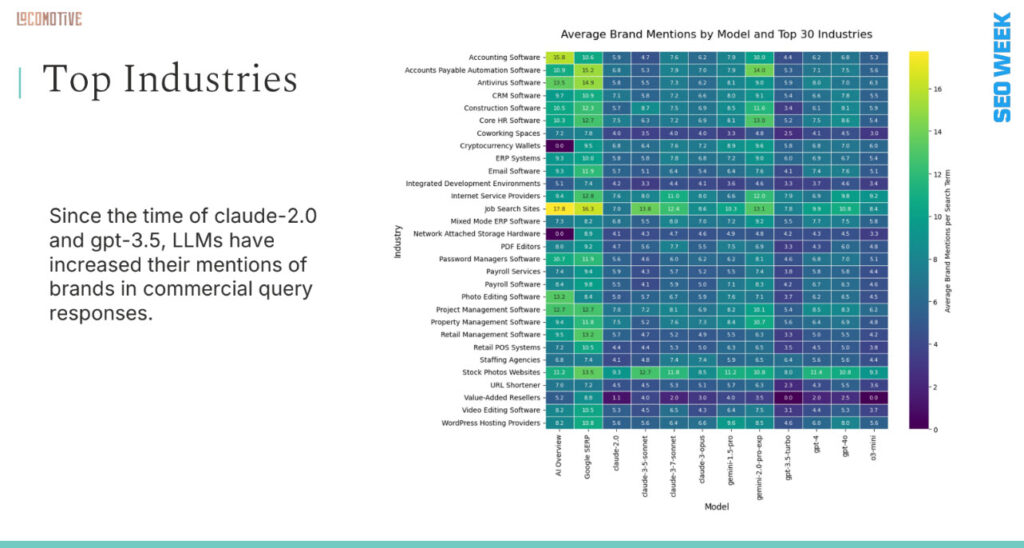
This all ties into Relevance Engineering and how we measure relevance based on how close together the related content is in vector space. LLMs look at semantic relationships like related keywords and synonyms as they retrieve information. You must keep all of this in mind when engineering relevant content.
Relevance Engineering for LLMs doesn’t always play by the old search engine rules. Any brand mention, citation, or association with a respected site still drives value. It’s about the overall authority and relevance of the source, not just the link value.
The below table from Mike King’s article on AI Mode can help your content hit all the pillars for successful appearances in searches:
- Fit the reasoning target
- Be fan-out compatible
- Be citation-worthy
- Be composition-friendly
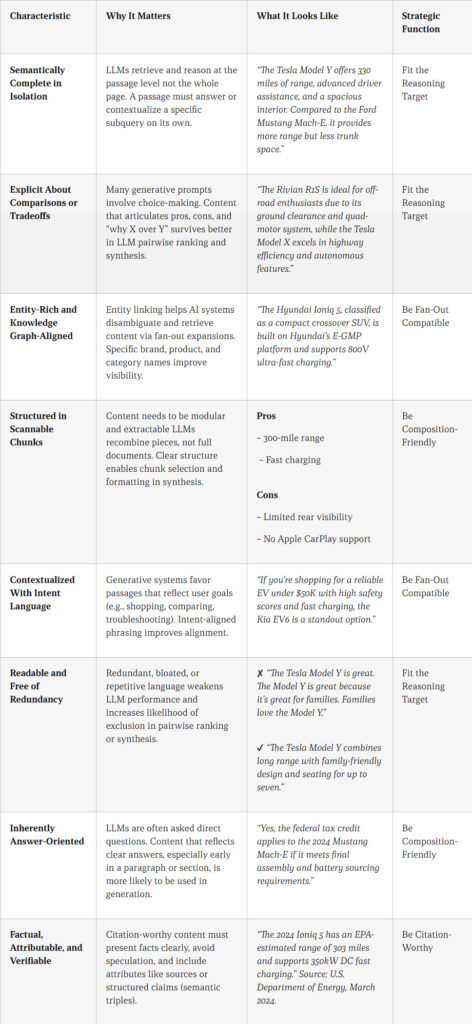
Getting Brand Visibility
Historically, search engines trained us to use simple, short keyword phrases. Today we can use more nuanced queries with all of the individual context that matters to our search and focus on the breadth and depth of our specific topics.
Garrett Sussman believes that for smaller brands, this means creating highly specific content that addresses precisely what your audience is looking for. It won’t generate massive traffic, but it will deliver more valuable and targeted content to help you get discovered organically and build a loyal audience.
“The biggest and most recognizable brands still dominate because people trust them, even if their content isn’t the best. It’s not exactly fair, but it’s the reality,” Sussman said. “That doesn’t mean we should stop creating great content for people. We should still aim to produce quality, audience-focused content, distribute it across various channels, and hope that search engines catch up and reward that effort.”
Digital PR and its Impact on Traffic
Digital PR has long been a staple of SEO strategy that was valued for the backlinks it could generate, but its purpose has changed. As Ross Hudgens said at SEO Week 2025, “Digital PR is an amplifier, not a creator of brands.” In other words, PR doesn’t build your brand from scratch. It can take what you’ve built and make it louder, more credible, and more visible.
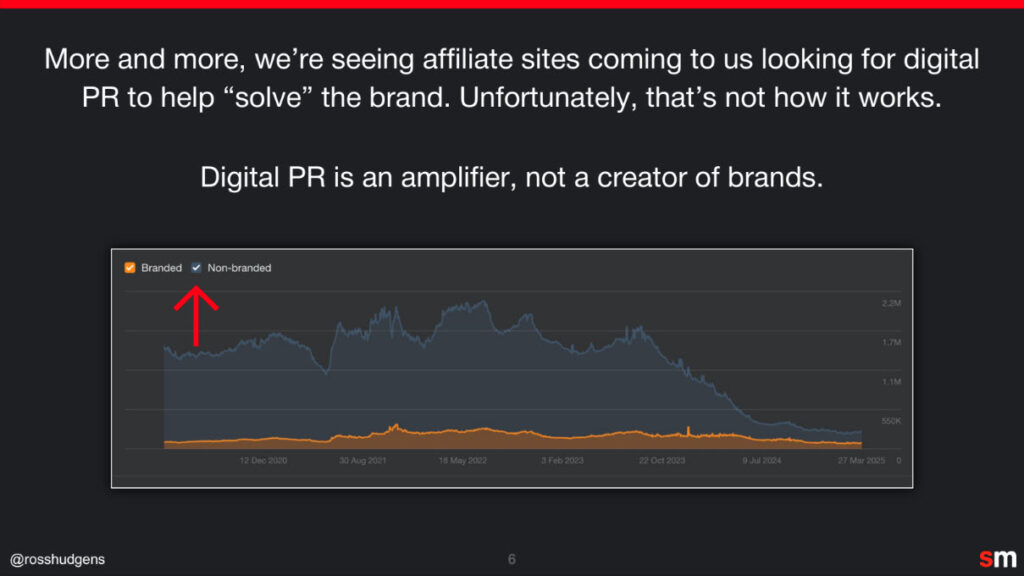
Once upon a time the goal was volume (links, mentions, and placements), but today it’s about resonance and that shift requires a mindset change. We need to get comfortable with less volume and less links if the quality and strategic value are higher. It’s no longer just about how many links a campaign earns. It’s about whether a brand is worth amplifying.

Hudgens challenged the SEO Week audience with an intriguing question: “Would we do this content today if SEO didn’t exist?” It was a gut-check that forces us to prioritize storytelling, values, and genuine audience engagement over gaming algorithms. The best digital PR campaigns are authentic and brand-forward.
But it can go both ways. A negative PR event can derail even the strongest digital presence and have a direct impact on traffic. Beyond the drop in clicks and visits, there’s also a dip in trust. A reputational misstep can hurt your image and your discoverability.
Consider the recent example of the language app Duolingo, which faced backlash when its CEO announced it would become an “AI-first” model and replace contractor roles. As a result, Duolingo faced attacks online, a loss of social media followers and users of the app, and had to delete many of its social media posts.
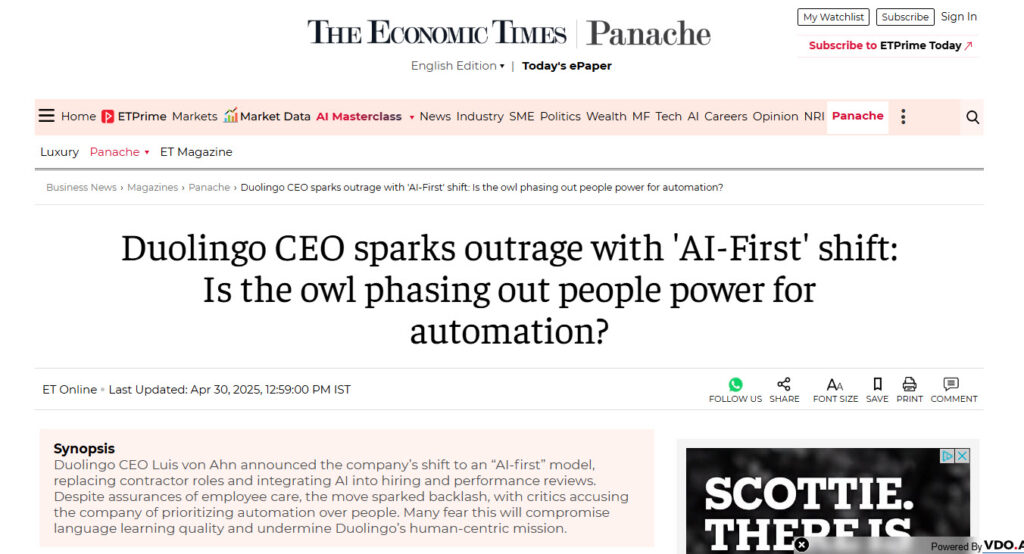
When Target rolled back its Diversity, Equity, and Inclusion (DEI) initiatives back in January 2025, they faced a boycott from angry customers, and a lawsuit from angry shareholders. As a result, Target stores faced a 9% decrease in foot traffic and a 37% drop in stock price this year.
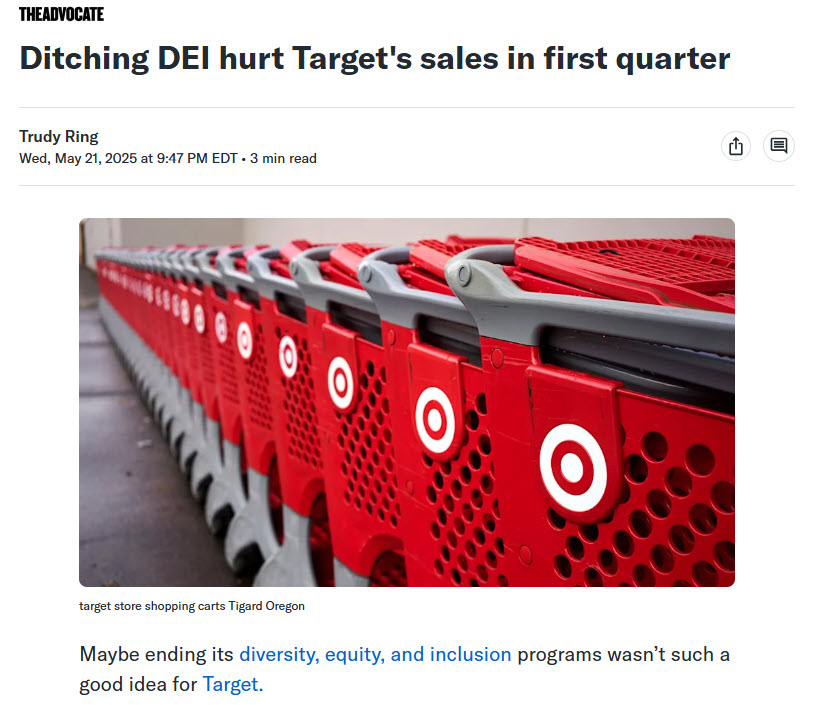
We’ll have to wait and see if there are long-term implications for the retail giant, but just by googling Target, you can see almost all of the People Also Ask questions are negative and reference the boycott:

Even AI Mode mentions the boycott in its summary for Target:
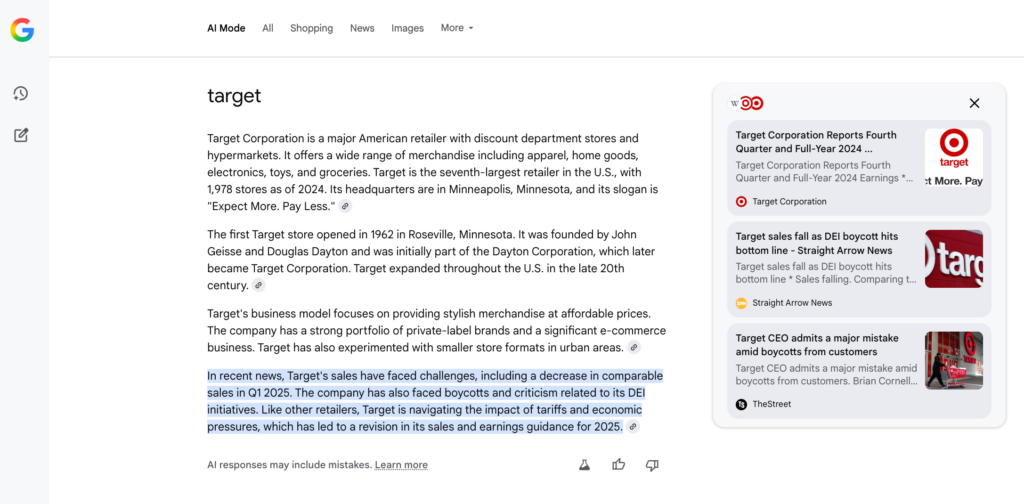
This raises the question of whether brands will be able to circumvent negative mentions in LLMs through sneaky content strategies like this conspiracy theory that Taylor Swift attended a Jets football game to cover up negative SERP mentions of her extreme private jet usage. This would assure that her name plus the word “jet” only showed positive results.
Digital PR today is about reinforcing the core of your brand because perception increasingly dictates performance. Think of your brand as the message and PR as the megaphone. But your message has to be one that’s worth hearing.
At SEO Week, Ross Hudgens pointed out that our industry used to treat PR as a numbers game, just cranking out links regardless of quality. That old-school, black-hat mindset was all about quantity over quality and Google got wise to that.
On the other side, Garrett Sussman explains the white-hat approach, which is building genuine digital PR by getting your brand mentioned in meaningful ways through strong content, creative campaigns, and notable achievements. Even if high-authority sites add a nofollow tag to your link, it doesn’t devalue your mention in the same way.
ChatGPT doesn’t have the same search engine algorithms as Google (or Bing), so when it’s pulling recommendations, how much does a link vs. a text mention differ? If ChatGPT is mostly focused on the words and not weighing links, a simple mention may have more value now.
Brand is the Benchmark
Search may have started as a game of keywords and rankings, but today, it’s a reflection of reputation. AI shapes search experiences, and recognition and trust have become the new SEO currency. The brands that stand out are remembered, respected, and show up wherever their audience is.
From visibility in AI-generated summaries to amplified reach through digital PR, the message is clear: your brand is your most powerful search strategy. Ultimately, success in this new era of search hinges on more than technical SEO. It demands clear, consistent, and credible storytelling, and content that matters whether or not Google exists.
Or, as Jeff Coyle said at SEO Week 2025: “Only editorial excellence survives.”
Need help building a digital identity worth searching for? We can help you engineer relevant content to get your business seen. Drop us a line.
